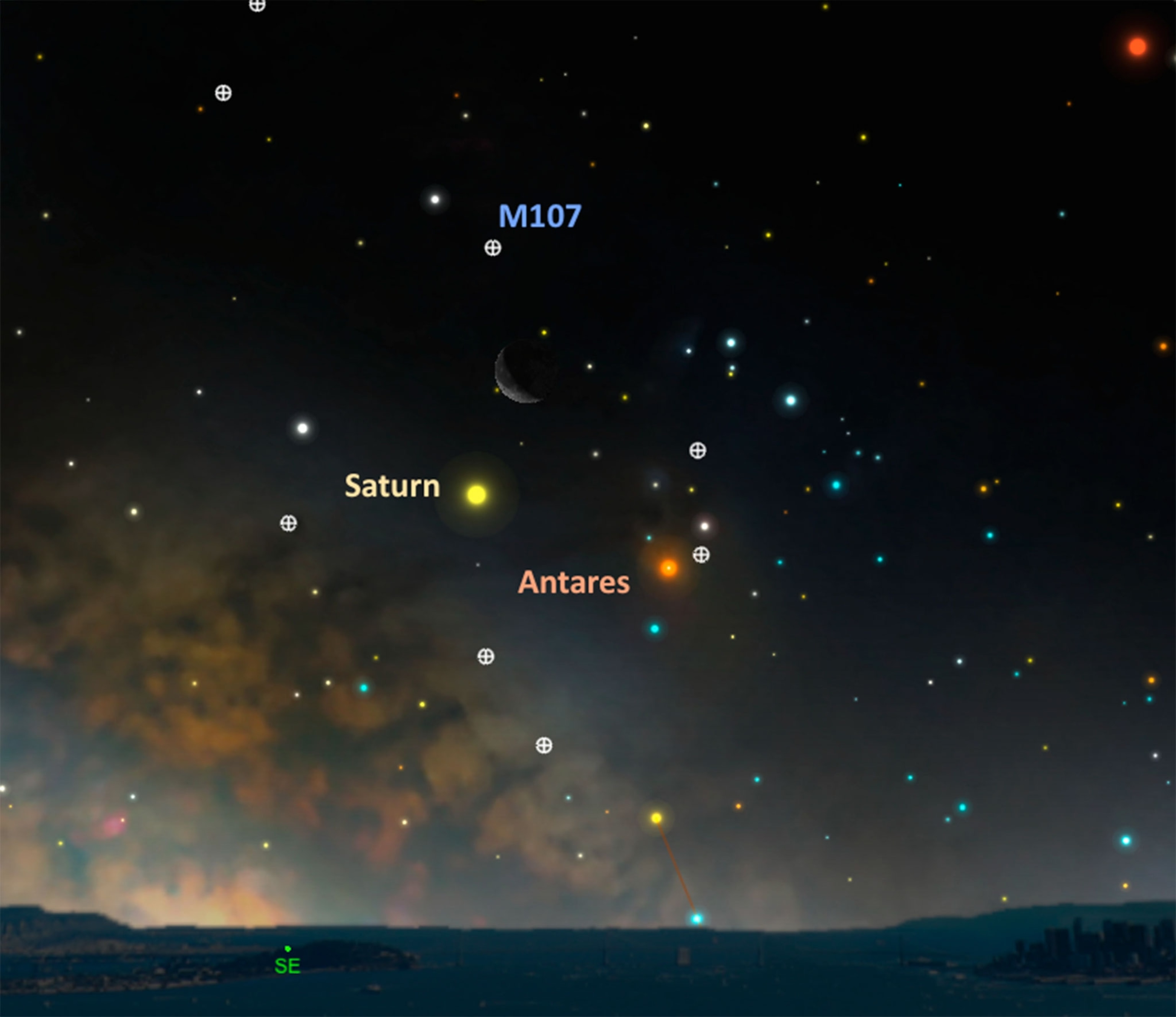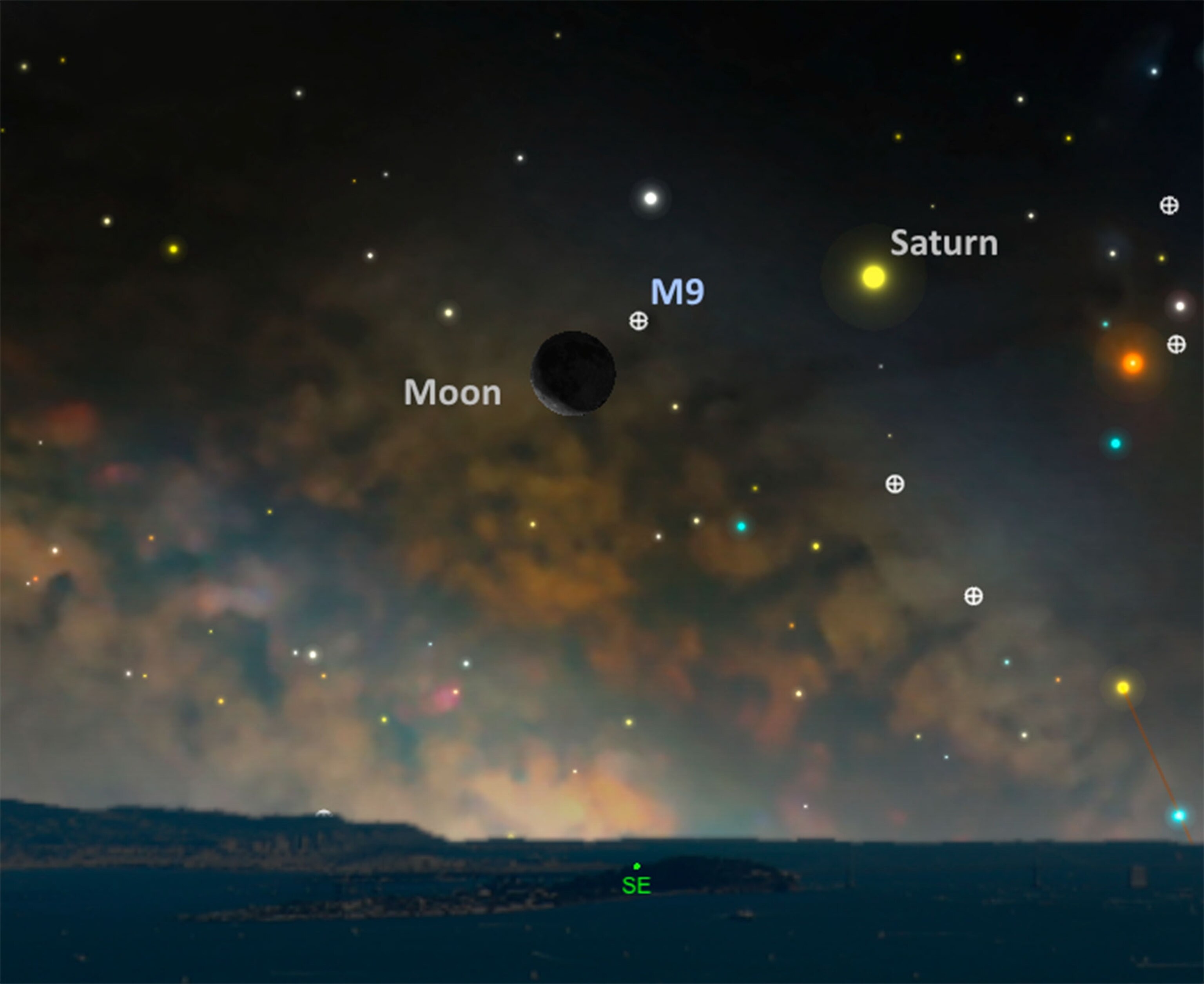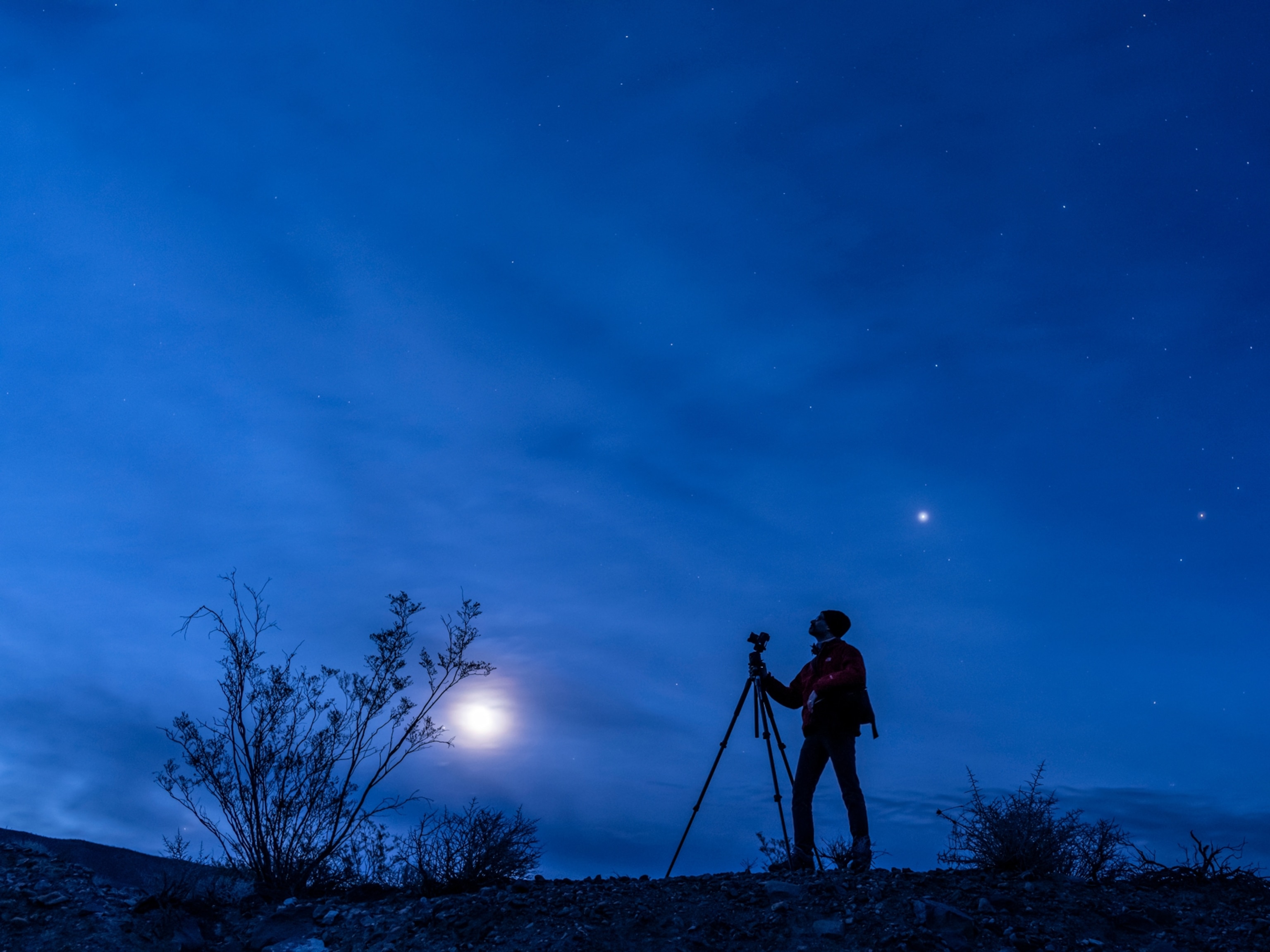
This Week’s Night Sky: Moon and Planets Form Cosmic Triangle
This is the last week to catch five planets aligned, plus the moon, Mercury, and Venus pose for a group photo.
Planet and Asteroid Pair. After darkness falls on Monday, February 1, telescope users can hunt down two distant objects in our solar system: the green giant Uranus and the asteroid Vesta.
First, find Uranus shining at magnitude 6 in the constellation Pisces. Here’s how to track the planet down: Find the four bright stars nearby that create the Great Square of Pegasus pattern. Draw an imaginary line between the corner stars from Scheat to Algenib, and continue another 15 degrees—equal to the span between your index and little fingers at arm’s length—and Uranus will look like a distinct but tiny green disk.
The asteroid Vesta, which is a bit dimmer at magnitude 8, should lie about six degrees south of the green giant. While both can be most easily seen through backyard telescopes, it is also possible to catch sight of the pair through large binoculars if you’re under dark skies far from city lights.

Tiny Vesta, which spans about 326 miles (525 kilometers) across, circles the sun in the asteroid belt between the orbits of Mars and Jupiter. It ranks as the second-largest body in this doughnut-shaped debris field, second only to the dwarf planet Ceres.
It lies so far away that sunlight reflected off its cratered surface takes 23 minutes to reach Earth. Meanwhile Uranus, is the third largest planet, slightly larger than neighboring ice giant Neptune and is nearly three light-hours away from us.
Moon and Saturn. Look toward the southeastern sky at dawn on Wednesday, February 3, for the waning crescent moon parked just above brilliant yellow-colored Saturn.

The cosmic pair will be less than five degrees apart, and if you train even the smallest telescope on Saturn, you can easily catch some nice views of the magnificent rings that encircle the gas giant.
Star Cluster. As a bonus stargazing challenge, telescope users can try hunting down the beautiful globular cluster Messier 107. The moon will act as a bright and conveniently placed guide to the giant ball of stars. Look five degrees to the moon’s upper right, or about the width of your three middle fingers held at arm’s length.
M107 is nestled in the constellation Ophiuchus and lies about 20,900 light-years from Earth.

Another Cluster. On Thursday, February 4, the thin crescent moon will sink a bit lower to the southeast. This offers a chance to hunt down an even brighter globular cluster parked next to the moon.
The two objects will be only three degrees apart—equal to six lunar disks side by side. M9 shines at magnitude 7.7, which makes it just visible with large binoculars, while small telescopes can pick up its outer star members. M9 sits about 25,800 light-years away.
Lunar Triangle. A cosmic treat greets early-bird skywatchers on Saturday morning, February 6, about a half-hour before local sunrise. The razor-thin crescent moon, Mercury, and Venus will form a distinct triangle low in the southeast.

All three objects lies within five degrees of each other, making them easily fit within the same field of view in binoculars. Photo hounds should find this an eye-catching photo opportunity.
(And remember, you can post your best space photos to National Geographic’s Your Shot photo community.
Last Chance for Five Planets. Wait until twilight and soak in the entire planet parade, a line-up of five planets: Mercury, Venus, Saturn, Mars, and Jupiter that’s visible all week.
The planets are aligning for the first time in over a decade, and all five will be visible without binoculars or telescopes. They’ll look like bright stars in the morning twilight—a stunning way to start your week.
This will be the last week to catch all five worlds close together, before Mercury gets lost in the glare of the rising sun.
Clear skies!





